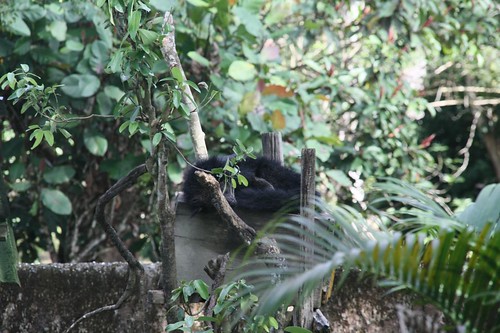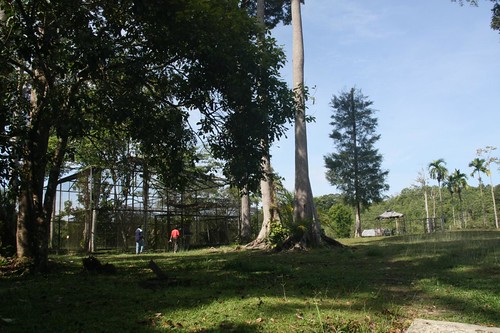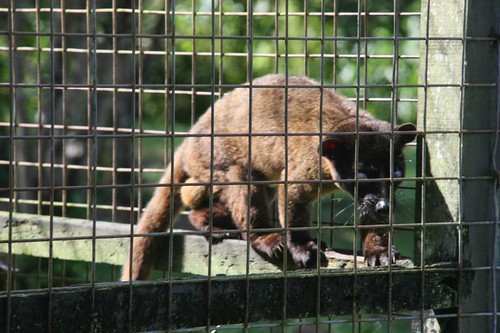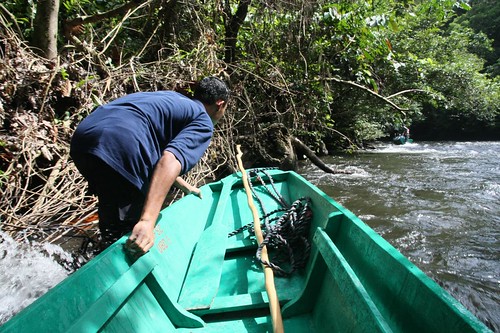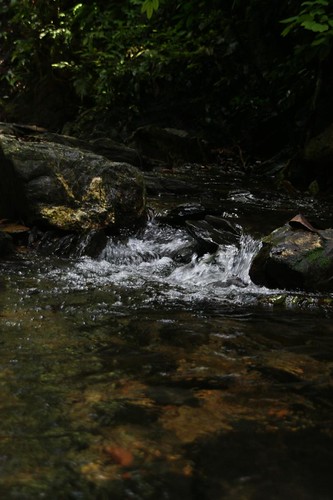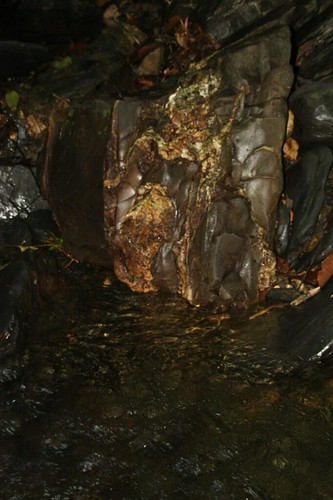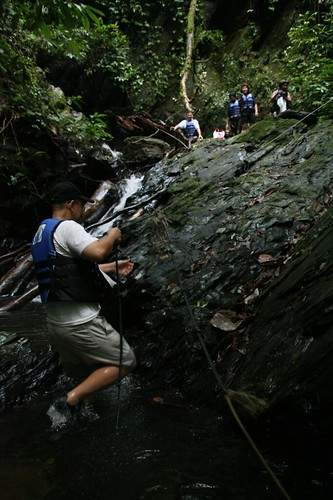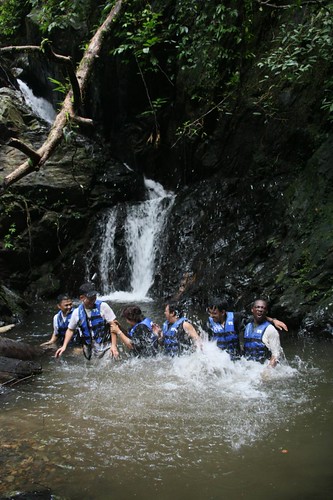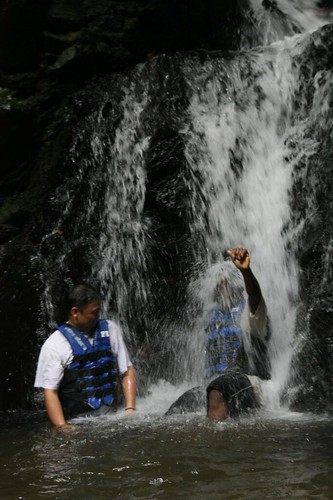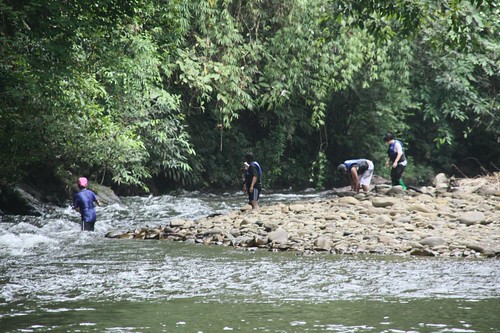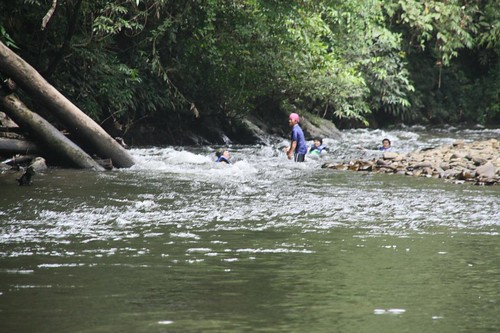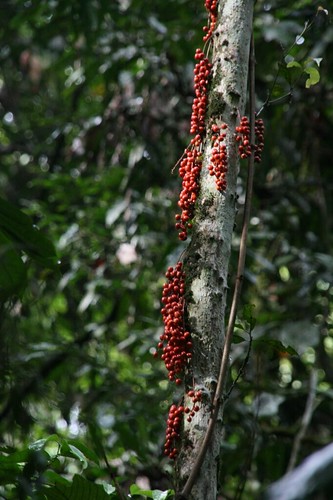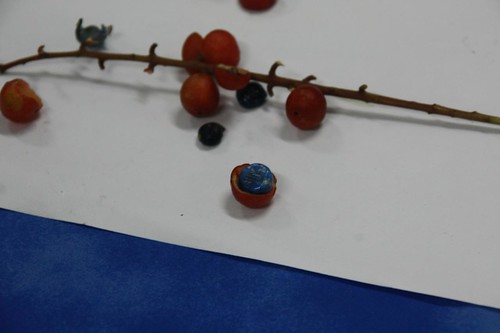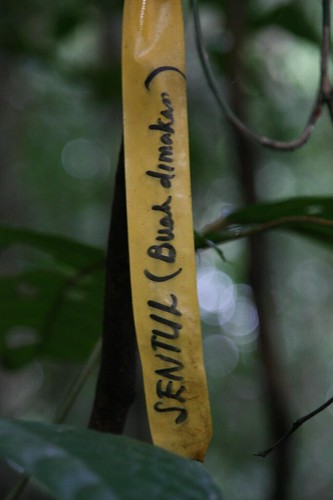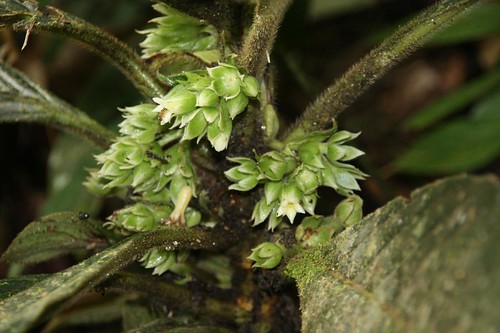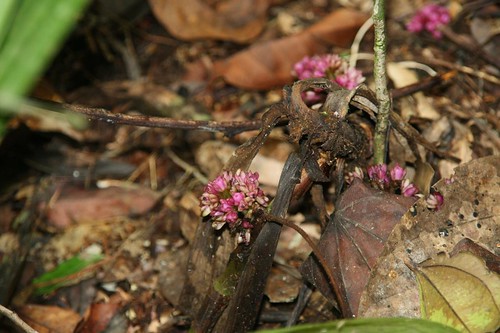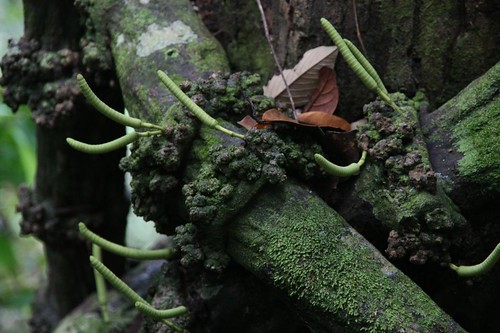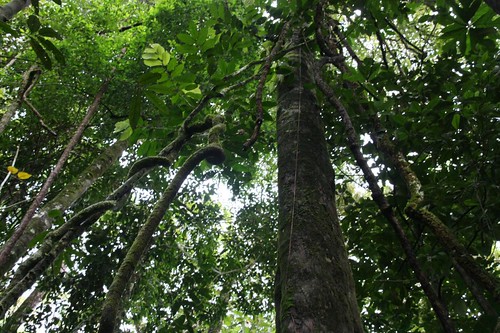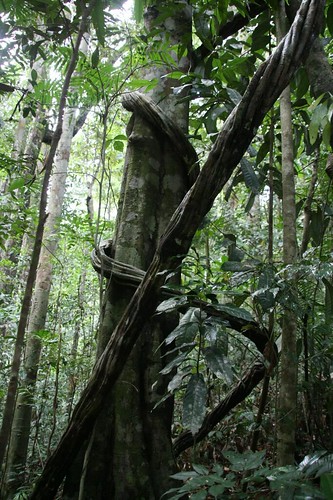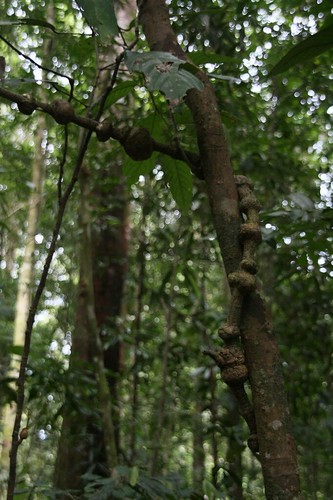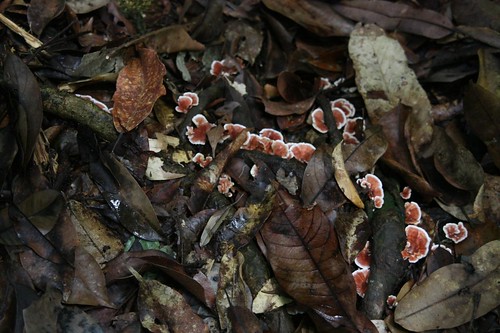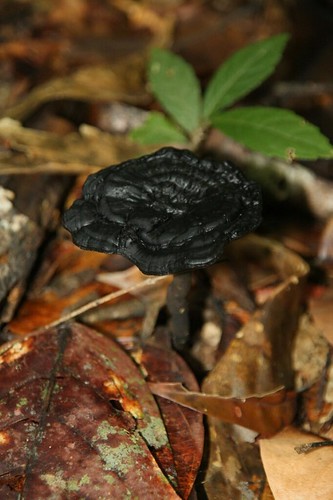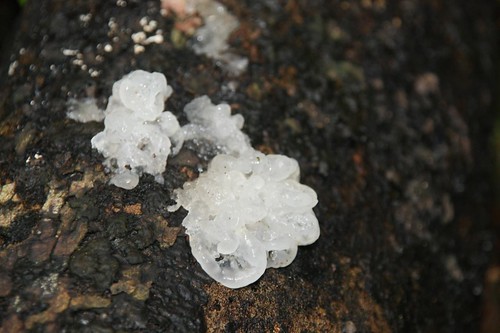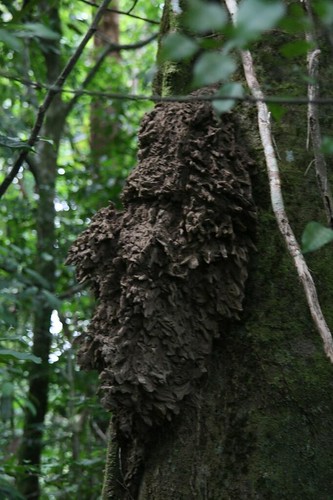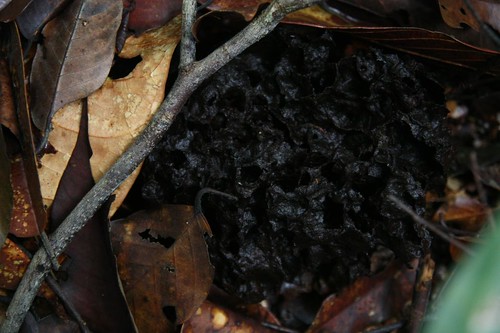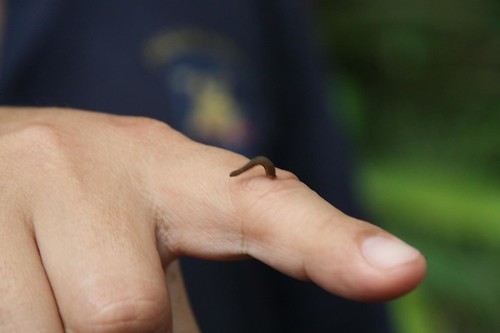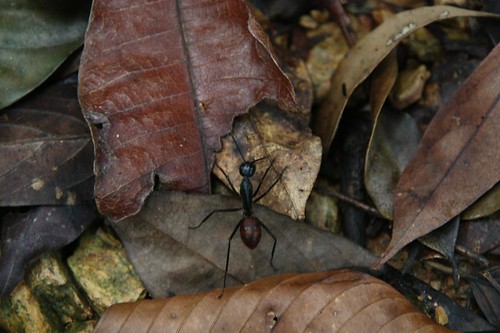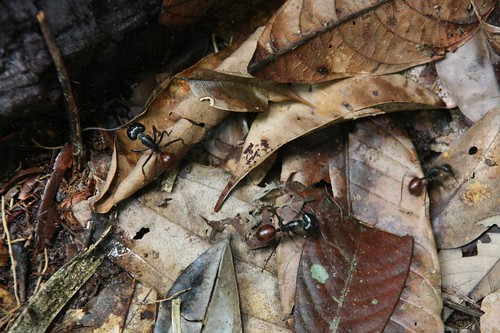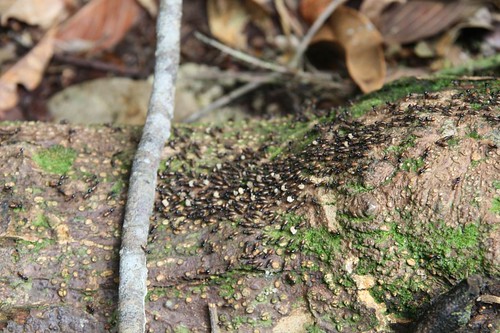That day turned out to be a perfect day for diving. Our diving spot was some kilometers beyond Pelong Rocks (Pulau Pilong Pilongan). I snorkeled while the others went down under water. Some guys brought special grippers to catch some lobsters though they eventually couldn't get any. The spot where we anchored was beautiful. Visibility was awesome that day and I was surprised at this time of the year we had such great visibility in the water, really. Not that I'm an expert. I always thought the sea would be rough by the last quarter of the year.
I had, for a while, wished to have renewed my diving license which expired four years ago! (But nah, need to save more money to travel around the world with my 48-day annual leave!) And, I'd also wished to have invested in a waterproof casing for my camera. I was swimming in 11m of water and I could see an expanse of flat coral reefs covering the sea bed, it was so amazing! I could see beautiful corals and many sorts of fishes (I don't know much about fishes!!). Well, I spotted one or two clown fishes! I tried skin diving but didn't manage to get very far because I couldn't hold my breath very long.
It was an ethereal world I was in. I swam with a shoal of fishes and was also chasing after this one particular angelfish-looking fish. I saw some tiny jelly fishes the size of the tip of my finger and also a larger one, as big as my arm, right next to me! When I saw the later, I swam as fast as I could away from it. Pretty stuff but scary.
Swimming above the divers where the air bubbles from them floated to the surface added more magic to the delightful snorkeling experience. At other times, I allowed myself to be swept by the gentle sea currents while keeping my eyes opened at the gorgeous sea bed. The buoyancy of the water made all that was around surreal. The sky was a perfect blue like the ocean and the fishes all looked happy swimming around.
I found this and this websites on diving in Brunei pretty helpful. Lee's website, on diving in Brunei, has some really lovely pictures of sea creatures with bubbly commentaries.

Our picnic basket

I always love the bumpy boat rides out to sea. The higher the boat flies, the more thrilling it is. The awesome sea breeze made the soul feel so big!
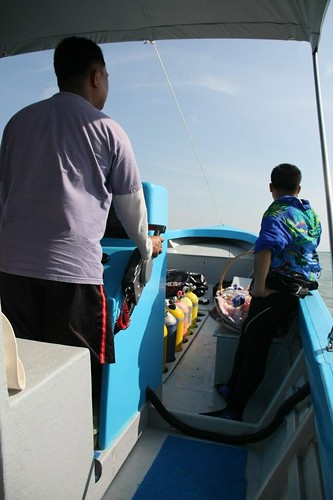
An oil rig and a ship

Pelong Rocks
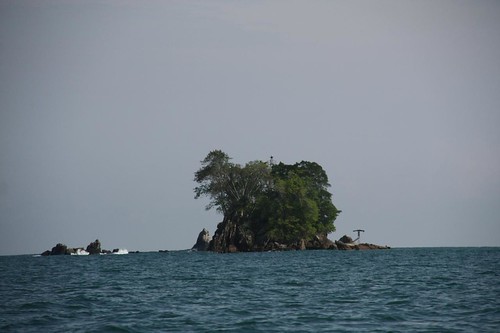
Gripper thingies
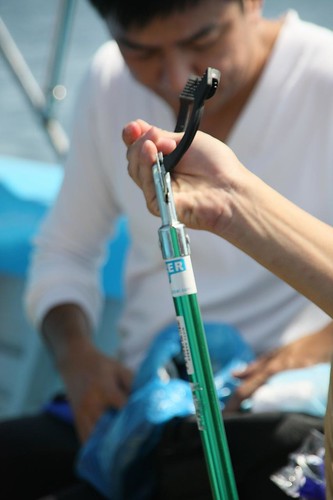
Scuba gear under the seats
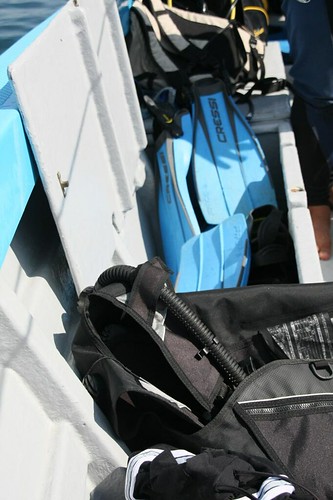
Fishing boat
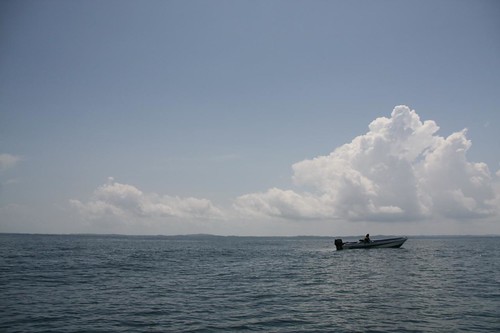
----------------------------------------------------
Article extracted from The Brunei Times
Unveiling Brunei's underwater wonder
Simon Enderby
BANDAR SERI BEGAWAN
Sunday, November 1, 2009
BRUNEI Darussalam is perhaps best known for its oil rich resources but over recent years the authorities of this state and players from its tourism industry have turned their attention towards a greener resource.
This new resource is readily available and is well on its way to put Brunei on the global map that includes the flora and fauna of the Bornean rainforest and, the biologically rich waters of the ocean that fronts Brunei.
Realising the importance of preserving the natural landscape, a ban on unlicensed commercial logging has ensured the survival of Brunei's rainforest, which in turn has enabled the earth to remain green while allowing the flora and fauna to flourish.
Amazing eco-friendly tourism opportunities too have sprung up, proving that you can still enjoy the earth without wiping out the natural beauty in the name of tourism. Similarly and even more recently, Brunei has come to realise that another treasure trove of natural wonders is just waiting to be explored, albeit judiciously, to benefit the country's long term tourism blueprint.
The coastal waters and oceans of Brunei Darussalam is teeming with amazing marine life and, the biological richness of its coral reef and marine environment is on par with some of the more renowned waters around the world. While others may have been visited once too often, Brunei's waters remain relatively unknown and untouched, hence making it a richer playground for the citizens of the deep.
The country has known that there was an abundance of marine life just offshore through its developing fishing industry. However, this is just the tip of the iceberg and reflects just a minute section of the rich biodiversity that can be found in its seas, coral reefs, mangroves and near-shore waters.
The sheer diversity and abundance of marine life found here has only recently been fully realised after some of the world's biggest names in marine science were brought together by the Brunei Fisheries Department to undertake a detailed study.
Dr Mark Erdmann headed the survey team along with renowned tropical reef fish expert Dr Gerry Allen, coral experts Dr Lyndon Devantier and Emre Turek, malacologist (sea shell expert) Markus Ruf and, underwater film and photography company Scubazoo Images.
Over the course of two survey periods totalling seven weeks, the team, supported and guided by research staff from the Brunei Fisheries Department, identified 34 research sites for investigation, with terrain ranging from inshore mangroves to shallow patch reefs to offshore drilling platforms. After a total of 500 man hours spent underwater, the final results clearly showed that Brunei's marine environment rivals that of Australia's Great Barrier Reef and Indonesia's Bunaken Marine Park, with nearly 400 species of hard corals, over 667 species of tropical fish and over 475 species of molluscs identified so far.
It's quite possible these numbers will rise even further once detailed studies of some of the samples are completed. Two new books have also been published as a result of the survey — The Tropical Reef Fishes of Brunei by Dr Gerry Allen and The Coral Reefs of Brunei Darussalam by Dr Lyndon Devantier and Emre Turek.
Many of the offshore reef sites were found to have an extremely high bio-diverse coral cover with an intense mix of hard and soft corals, whilst others were rich in macro critters and a wide range of nudibranchs, several that they haven't seen before including one Bornella species, which has yet to be described. This joined a growing list of new or undescribed species of corals and fish as the team widened their search.
Along with the rich biodiversity and great underwater visibility, the team was surprised to find a rich mix of hard and soft corals, somewhat reminiscent of the coral reefs of the Caribbean. Under normal circumstances this abundant mixing would not occur, as the hard corals would out-compete the soft corals and eventually drive them out of the shallows and into the deeper waters, where sunlight levels are lower and hard corals find it more difficult to grow.
Unfortunately, as with all of the world's marine environments, Brunei's coral reefs haven't escaped the hand of man, as the research team identified several dive locations with evidence of fishing encroachment.
However, interestingly the numbers of fish were still high and on the whole, the reefs were in very good condition. There is a silver lining to this dark cloud of human interference. As a result, from the comprehensive survey and acknowledgement of the findings, the Brunei Fisheries Department is now in the process of formulating a network of Marine Protected Areas to safeguard its rich coral reefs.
This highly responsible approach will in turn guarantee the long term safety of Brunei's underwater treasures, as well as allow those areas that have been affected by man's activities in the past to rehabilitate and rebound.
With the guaranteed safety of this incredibly bio-diverse resource and, with the growing interest in marine tourism, especially that of scuba diving and snorkeling, Brunei's tourism industry shall now be able to package both its Reefs and Rainforests to both national and international visitors.
Courtesy of Muhibah
